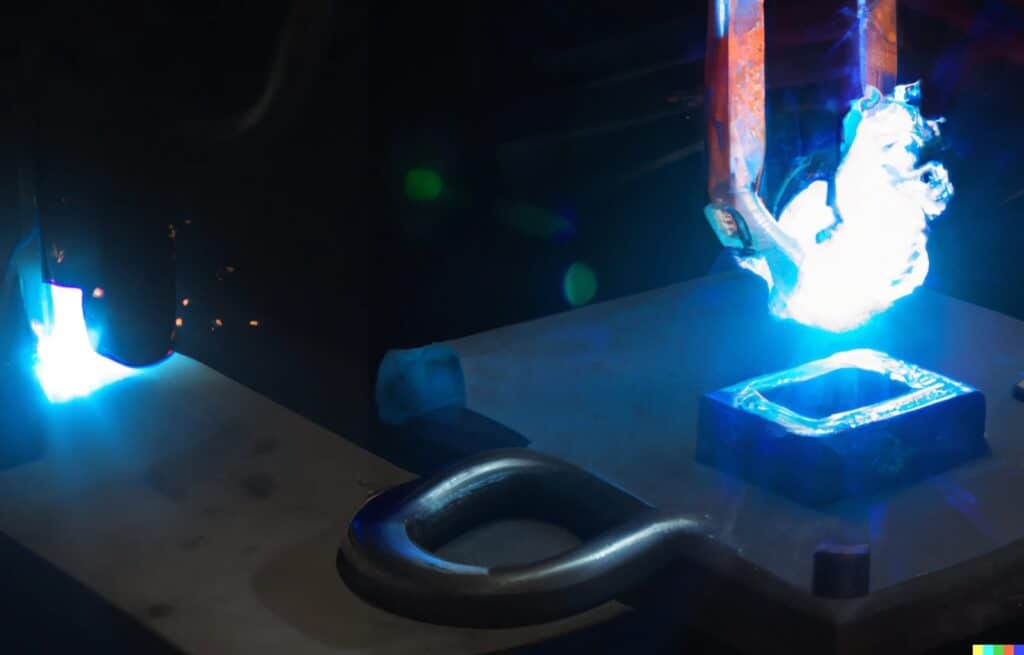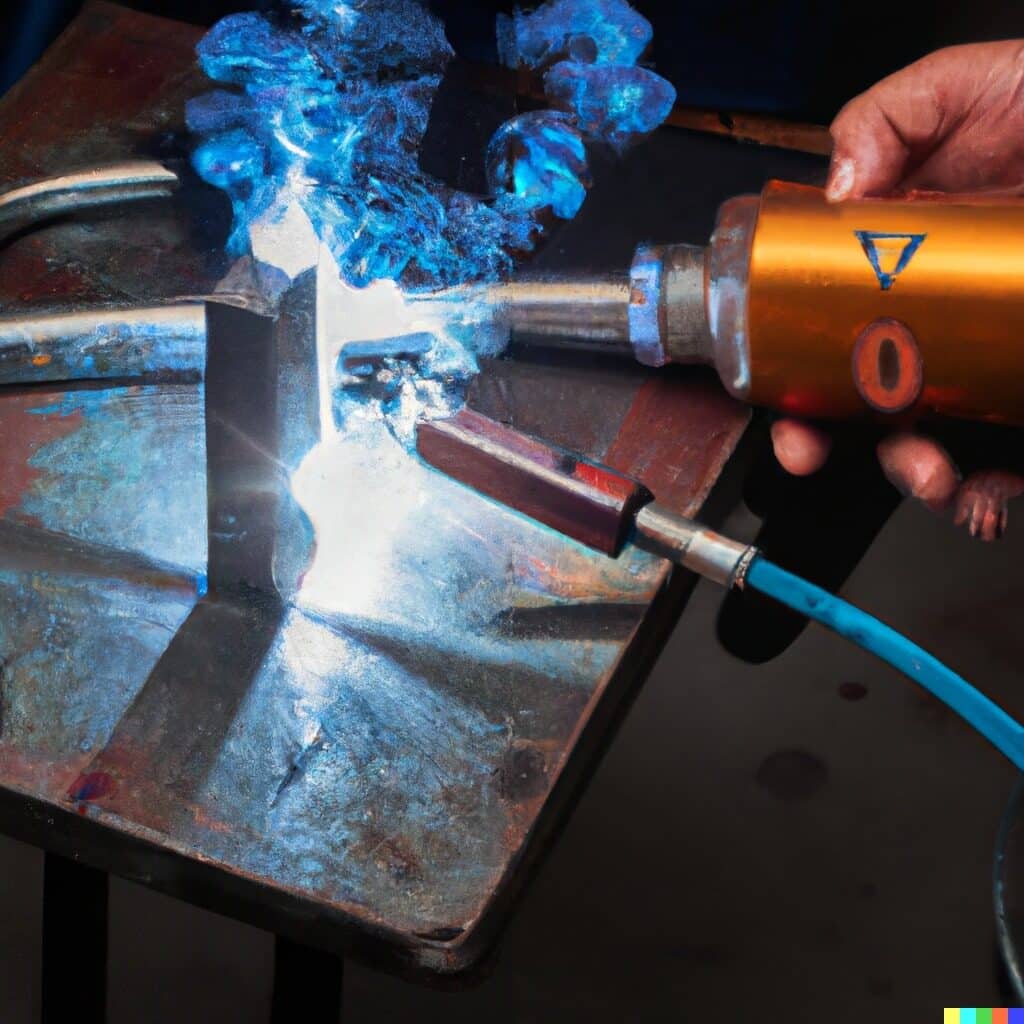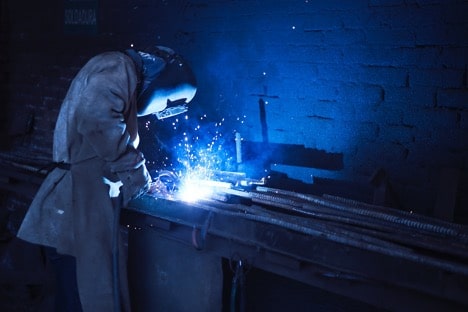Are you looking to learn the basics of how to weld stainless steel? It might sound intimidating, but it doesn’t have to be! With the right tools and knowledge, anyone can successfully weld stainless steel with a few simple steps.
In this article, we will cover what exactly is required for welding stainless steel with MIG (Metal Inert Gas) welding and tips for avoiding common mistakes. Read on to find out how easy it is to get started and unlock your full potential in MIG welding stainless steel today!
What is welding, and what are the different types of welding available to you
Can you stick weld stainless steel? As an engineering supplies company, welding stainless steel is often a task we face. Welding involves bonding two pieces of metal together to form one piece. Each welding process differs depending on the type of material being welded and desired finish. When welding stainless steel, there are several welding processes available.
The most popular welding process for stainless steel is Mig Welding. Mig Welding is popular due to its simplicity and accuracy. This form of welding requires only one pass, making it faster than many alternatives. It is best for applications where quality and repeatability are important. Interestingly, you can use Mig welding for stainless steel – you just need to find the best welder for stainless steel for that specific job type. Choosing the correct settings and speed is key, as grinding down mistakes means more time, investment, and effort required.
Other types of welding include Tungsten Inert Gas welding (TIG welding), which creates clean and precise welds. Shielded Metal Arc Welding (SMAW) is also a common welding choice due to its low cost and ease of use. Another option is Plasma Arc Welding (PAW), which provides superior penetration depth in thicker materials than the other two welding processes. All these types of welding require special knowledge and skills, so it’s important to be sure the job will be completed correctly by following safety guidelines and using the right equipment.

How to weld stainless steel – Including the necessary equipment and materials
Welding stainless steel is an advanced process that requires proper preparation and the correct equipment. In most cases, welding stainless steel properly requires a MIG welding setup, including a Tungsten inert gas (TIG) or Metal Inert Gas (MIG) welder and the right electrodes. Additionally, titanium oxide paste can be used to help protect the stainless steel during the welding process. The pacing of welds should also be done slowly and evenly to ensure they are done properly while wearing protective gear to reduce exposure to welding processes is advised.
Welding stainless steel is a time-consuming but rewarding task that requires specialized equipment and materials. The most important step to consider is the selection of an appropriate welding power supply. A minimum of 200 Amps with AC or DC output is needed to weld stainless steel properly. Additionally, a TIG welder featuring high-frequency start and pulse width modulation control would be optimal for the job, as it can provide a stable arc during welding. As mentioned above, Protective materials are also essential for welding stainless steel, such as proper eyewear and long-sleeved clothing with thick gloves for added protection.
Specialized stainless steel filler rods must also be acquired in order to form the weld bead correctly before cooling off. Lastly, given how heat-resistant stainless steel is compared to other metals, proper pre-weld conditioning steps should be taken to adequately reduce the warping of the metal during the welding process.
While it takes more specialized training and practice to master how to weld stainless steel, following these steps will make it much easier for a novice welder.
Tips for MIG welding stainless steel
Can you weld stainless steel with a MIG welder? Es, Stainless steel can be successfully welded using a MIG welder, but it is important to understand some of the basic technical considerations prior to beginning your welding project. Before beginning to weld, the surfaces of the join should be prepared to ensure proper coverage and adherence. The surface should be properly prepared before attempting to weld stainless steel, by scraping off any dirt or rust and cleaning the area with a wire brush. Additionally, it is essential to use the right size of MIG wire in order to achieve a strong weld; this can vary depending on the base metal thickness, position of welding, and amperage of the machine.
Mig welding stainless steel can often be challenging but can be achieved with proper preparation. After preparation is complete, a balanced arc should be established between the workpiece, and the polarity required for MIG welding can begin. With the right preparation and information, a MIG welder can safely weld stainless steel.

The benefits of MIG welding stainless steel over other methods
If you are thinking, can stainless steel be MIG welded? Here are some benefits to consider. MIG welding can be used to join stainless steel metals together rather than utilizing other welding methods, such as gas tungsten arc (GTAW) or oxyacetylene. The benefit of MIG welding stainless steel is that the process can be completed quickly compared with alternative techniques, resulting in improved productivity and cost-effectiveness.
Additionally, MIG welding can be done flexibly since thick and thin materials can be welded, making it suitable for various applications. Furthermore, the molybdenum content of stainless steel ensures excellent corrosion resistance of finished products when compared to other metals and alloys. Lastly, the low temperature at which MIG welding is conducted and relatively low levels of contaminants in the air can combine to make it an attractive option over other processes.
Examples of projects with MIG welding stainless steel
Wondering what projects you can MIG weld stainless steel? Mig welding stainless steel can open up a range of potential projects. It can be used to create custom brackets and structural components. You can also take advantage of its superior corrosion resistance to join many types of duplex and ferritic alloys.
Additionally, it can be used for commercial fabrications that require excellent weldability but can also provide aesthetic appeal when tackling decorative pieces like home and garden art. What truly makes MIG welding stainless steel invaluable is that it can handle a variety of alloys without needing to switch processes or materials, making complex projects easier and faster to complete while lowering overall costs. So yes, you can fully take advantage of this versatile process to stick weld stainless steel!
Get help with MIG stainless steel welding YENA Engineering tools and parts.
There are a few special concerns to take concerning whether can you weld stainless steel. But with the right precautions and preparation, it’s not difficult to weld this sturdy metal. If you need help or guidance with MIG stainless steel welding projects, YENA Engineering has the tools and parts you need to get started. Visit our website or contact us today for more information.
If you have questions about MIG welding stainless steel or are looking for help with a project, don’t hesitate to contact us. We’re more than happy to provide advice or resources as needed. In the meantime, check out our website for engineering tools and parts that can make your next project a success. Mig welding is a great way to join stainless steel materials – give it a try today!


